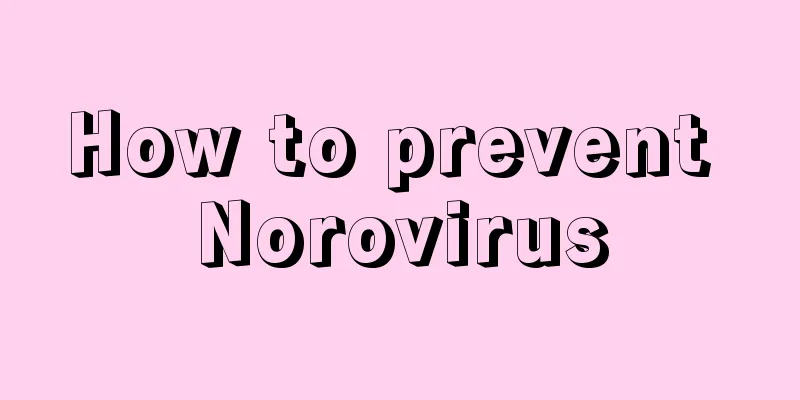How to prevent Norovirus

|
Viruses are microorganisms that are harmful to people's health. Most viruses are highly infectious. Therefore, viral diseases suffered by people are generally caused by infections. There are many types of infectious viruses, especially in spring and summer, when a large number of viruses multiply at their peak, and people need to strengthen their protection. For example, Norovirus is a very harmful virus. Let’s take a look at how to prevent Norovirus. Norovirus, also known as Norwalk virus, is a virus of the genus Norovirus in the family Caliciviridae. It is a group of virus particles with similar morphology and slightly different antigenicity. 1. Hand hygiene Maintaining good hand hygiene is the most important and effective measure to prevent norovirus infection and control its spread. Wash hands correctly according to the six-step hand washing method in the Technical Specifications for Disinfection (2002 Edition)[60], using soap and running water for at least 20 seconds. It should be noted that disinfectant wipes and no-rinse hand sanitizer cannot replace the standard hand washing procedure. Each collective unit or institution should be equipped with a sufficient number of hand washing facilities (soap, faucets, etc.) and require relevant personnel to wash their hands frequently. In addition, be careful not to touch ready-to-eat food directly with your bare hands. 2. Environmental disinfection The general principles of environmental disinfection are as follows: Schools, childcare institutions, nursing homes and other collective units and medical institutions should establish a daily environmental cleaning and disinfection system. Chemical disinfectants are one of the main methods to prevent the spread of norovirus through contaminated environments or surfaces. The most commonly used ones are chlorine-containing disinfectants, which should be prepared according to the product instructions. 3. Food safety management Strengthen the health management of food practitioners. Patients with acute gastroenteritis or latent infections must report to the food safety management personnel of the unit and should be temporarily transferred from their posts and isolated. Canteen tableware, facilities and equipment, and production and processing sites should be thoroughly cleaned and disinfected. High-risk foods (such as shellfish) should be deeply processed to ensure they are thoroughly cooked. Cross-contamination should be avoided in all aspects of meal preparation. 4. Water safety management Suspend the use of contaminated water sources or secondary water supply facilities, and disinfect them by appropriately increasing the amount of chlorine added; suspend the use of contaminated bottled water and drinking water, and immediately disinfect the bottled water machines and drinking water machines; relevant drinking water may be used only after passing the hygienic evaluation. |
<<: What to do if there are termites? Methods for preventing and controlling termites
>>: Seven key points to easily say goodbye to eye contact phobia
Recommend
How to quickly get rid of eye bags
Many beauties have big bags under their eyelids, ...
What foods can be eaten to regulate ovarian mature teratoma
For patients, the correct diet is closely related...
How to assist biological therapy after kidney cancer surgery
About 10% of patients with renal cancer will expe...
What to do if fish have parasites
Parasitic diseases are very scary, so everyone sh...
The main factors that induce the high incidence of colon cancer
Among the high incidence of cancer, colon cancer ...
How effective is high temperature in removing formaldehyde
The temperature in summer is very high, so many p...
What are the diagnostic criteria for primary liver cancer? Pay attention to these symptoms of primary liver cancer
Liver cancer is one of the most frightening and d...
Piriformis sciatic nerve
The piriformis muscle is an important muscle loca...
Can ankylosing spondylitis be cured?
Patients with ankylosing spondylitis need to pay ...
Is expired perfume harmful to people?
Perfume is one of the must-have items for women. ...
There are so many mosquito bites on my butt
Many people's skin is naturally sensitive and...
What is the best medicine for glaucoma
Glaucoma is a common eye disease in our lives. Th...
How can the symptoms of lung cancer be seen?
If you have lung cancer, then the symptoms of lun...
How many days will it take for the blisters to heal
There are many reasons for blisters, but most peo...
How to relieve pain from hot water burns_How to treat hot water burns
Everyone must be particularly careful and attenti...









